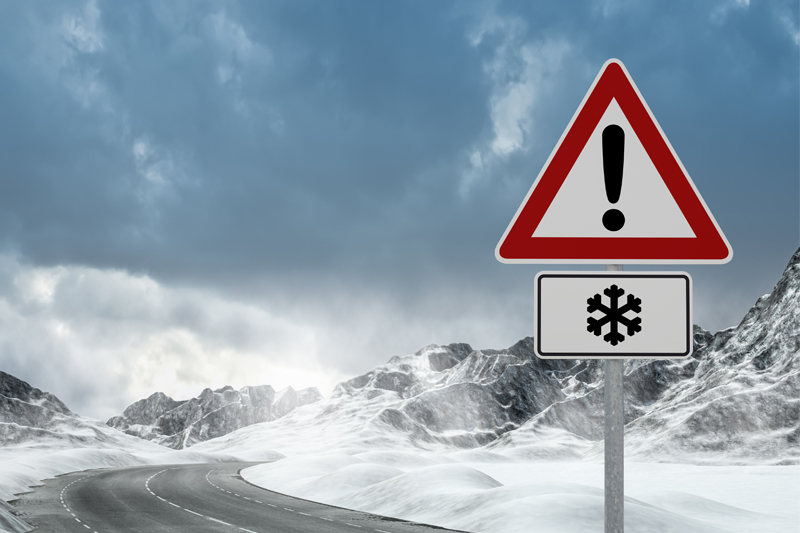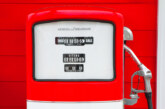
Venson provides advice to fleet managers on preparing fleets for winter.
Winter weather in the UK can be unpredictable. In recent years there has been flash flooding, heavy snow falls and high winds. Equipping vehicles to cope with these conditions is vital to keeping employees’ safe whilst out on the road. Recently published figures from the Department of Transport (DfT) reports 1,792 deaths were recorded in road traffic accidents in 2016, up 4% on the previous year and the most since 2011.
Gil Kelly, Operations Director, Venson Automotive Solutions, says “Preparing your fleet vehicles for winter is essential to avoid emergency repairs and to keep downtime to a minimum. During the winter months fleet safety should be a priority for fleet managers. The winter season requires the most care and preparation for fleet vehicles, as drivers are exposed to more challenging driving conditions and are more vulnerable to crashes and breakdowns.”
First and foremost, fleet managers should ensure they have a winter driving policy in place that addresses how vehicles are prepared for winter, what equipment a driver should carry for unexpected situations and what they should do in the event of an emergency, such as an accident, breakdown or getting caught up in bad weather.
Kelly continues, “It is important for fleet managers to share the winter driving policy information with all drivers. If an employee is involved in a fatal accident and there is evidence of serious management failings the company could be legally liable. Winter is a challenging time for companies to keep vehicles on the road, but with the right preparation and educating drivers companies can keep their staff safe, optimise fleet usage and manage repair costs.”
Vehicle Safety Checks
See clearly
- Improve vision significantly by making sure that the windscreen is clean, inside and out. Scratches, abrasions and chips on the outside can also worsen the dazzling effect of the sun. If your vision is obscured through dirt, snow or even sticker-infested car windows, you could face a hefty fine.
- Check windscreen wipers regularly and replace when damaged.
- Windscreen washer fluid should be topped up and treated with a proprietary additive to reduce the chance of freezing in frosty weather. Don’t use ordinary engine antifreeze as it will damage paintwork.
- Use a good quality de-icer and a proper scraper to clear glass, always use a specially formulated windscreen washer liquid rather than soapy water.
Be seen
- Check that all bulbs are working and that headlights are clean and aimed correctly.
- Keep number plates clean. You can be fined if they are dirty and illegible.
Stay on track
- Tyres are one of the most important components of a vehicle. The tyre tread area making contact with the road is relatively small, only about the size of the palm of your hand. So, if your tyres are worn or damaged it can seriously affect your car’s safety and handling. Not only that, if your tyres don’t meet legal requirements, you could face a fine. Tread depth must be above the legal minimum of 1.6mm throughout a continuous strip in the centre three quarters of the tread and around the entire tyre circumference.
- Check tyre tread depths and tyre pressures on a regular basis. Tyres should be inflated in accordance with the vehicle manufacturer’s specification and you should not be tempted to reduce tyre pressure when there is snow and ice around, it doesn’t help with grip and can affect the vehicle’s handling. Check tyre pressures at least once a month and when the tyres are cold.
Winter Driving Tips
- Get up at least 10 minutes early to give time to prepare the vehicle.
- Don’t drive off without the windscreen being de-misted and clear of ice. Ensure there is good visibility out of all windows.
- Remove snow from the car’s bonnet and roof as this can fall onto your windscreen obscuring your view as well as causing a hazard for other drivers.
- Besides an ice scraper and de-icer, carry a mobile phone with fully charged battery and an in car charger, torch, first-aid kit, tow rope, foil blanket, warm coat, gloves and boots, jump leads, shovel, warning triangle, an old sack or rug (to put under the wheels if you do get stuck) and protein snacks with a bottle of water.
- Plan your route to favour major roads which are more likely to have been cleared and gritted.
- Always let someone know where you are travelling to and your expected arrival time.
- Schedule journeys to allow time for sufficient rest stops, and take account of weather and traffic conditions.
- Put safety before punctuality when the bad weather closes in, always allow extra time to reach your destination.
- Remember stopping distances are 10 times longer in ice and snow. Gentle manoeuvres are the key to safe driving.
- Only drive through water if you know that it’s not too deep for your vehicle. Drive slowly and steadily, allowing oncoming traffic to pass first. Test your brakes as soon as you can after leaving the water.
- If you do get stuck in snow, straighten the steering and clear the snow from the wheels. Put a sack or old rug in front of the driving wheels to give the tyres some grip. Once on the move again, try not to stop until you reach firmer ground.
- The majority of modern cars use long-life antifreeze, and it is absolutely essential that you don’t mix these with other types as this can cause a sludge to form in the engine.
- You must use headlights when visibility is seriously reduced. You may also use front or rear fog lights but these must be switched off when visibility improves as they can dazzle other road users and obscure your brake lights.








